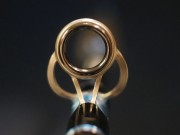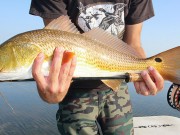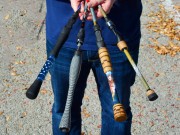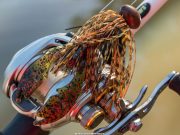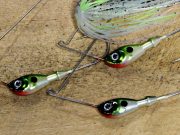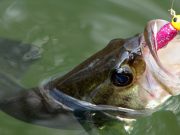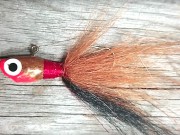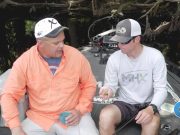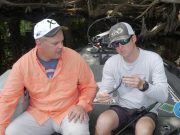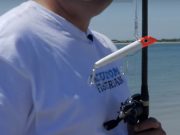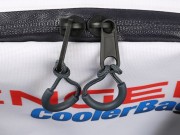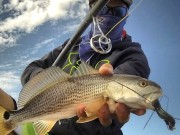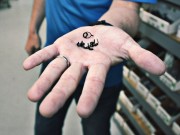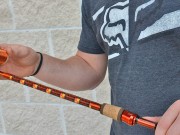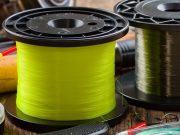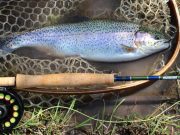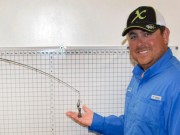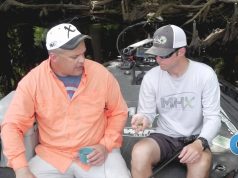Basically, spinnerbaits are designed to simulate a larger predator attacking smaller bait. It’s a circle of life thing, where the fish you are after will instinctually go for the large of the options, in an ambush attack.
With a large and sturdy hook, it is also easy to run through weeds and over structure without handing up (like it would if it was designed with a treble hook).
It actually works best (arguably) when you purposely run it into structure, pause, then continue the retrieve (simulating a stunned bait). There are so many different varieties out there today, but we’ll cover some of the more basic flavors available.
Willow Blade
These are longer and thinner in form, and are meant to better simulate tiny bait fish. There come in different colors, but silver and gold are pretty standard. Willow blades create less drag when retrieved, and provide enough flash while providing lower vibration.

Fisherman use these more around ambush points near structure, since it is usually in those areas that nest the smaller bait fish we are trying to simulate. Also, due to the narrow design, they are a little easier to rip through the pads and weeds without all the muck clinging to the blade swivel.
Spinner baits with willow blades can have 1, 2, 3 or more blades, the top ones much smaller, and the bottom one larger (about 4 to 5 times larger usually). They can have the same color, or different (top ones gold and bottom one silver is very common).
The reason for the two blades is to create a specific type of flash, and also to aid in the desired vibration profile on retrieve.
Colorado Blade
These have a perfect balance of flash and vibration. The round blade does not run through the water as easy as the willow blade, but that is on purpose, The blade in this case wants to resemble a little larger of a bait fish, which in nature (and therefore in the lure design) creates a larger vibration profile and larger flash.
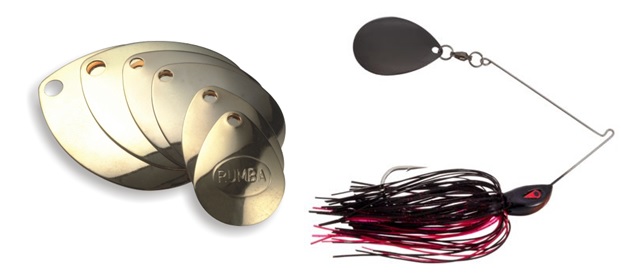
Arguably, this may be the best all around spinning bait, and the one that might be most affective for beginners to use and learn with. The larger round blade also makes it a good jigging option, without the need to switch rods, or re-tie for a jigging setup.
Indiana Blades
Basically a slightly narrower version of the Colorado blade. A little less flash than the Colorado blade, yet more vibration than the Willow blade offers.
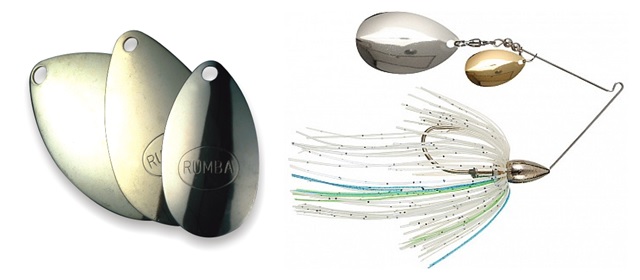
These are often used as the smaller blades on a spinnerbait, where the last (larger) blade would either be a willow or Colorado blade. The idea being it will give it a little more vibration when paired with a willow blade, or a little less vibration when paired with a Colorado blade.
Dimpled Blades
Each of the blade types can be dimpled (like a golf ball) and have one major feature you will notice as soon as you retrieve it – massive vibration. For times when you want to make sure the fish know you are there, this is a great option.

For example, in lower visibility waters, vibration can bring on more strikes than lower vibration lures because the fish can sense it more often.
Spinnerbait Body Design
The hook area is pretty standard, on the head (where the eye of the hook usually is) you have basically a jig head, and that helps keep the spinner bait hang in the water in the correct position.

The color of the jig head varies greatly, with smaller more subtle changes offered in the jig head design itself. Some heads are flatter to make it easier to run through vegetative cover.
Some have a blunt front to aid in running it into and around firmer structures like fallen trees. The hook itself is usually the same profile, although some designs have a longer shaft to aid in the hook set (to that end, some versions come with a second hook, called a stinger).
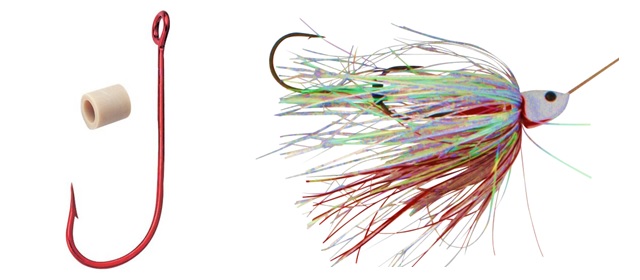
If you are getting bites but having difficulty getting a good hook set, adding a stinger hook could really make a difference (to the good).
Spinnerbait Skirt
The hook is usually surrounded by a ‘skirt’ or thin rubber like strands that form a skirt like shape around the hook. The reason here again is to provide more action for the fish, as well as make the retrieve more – predictable.
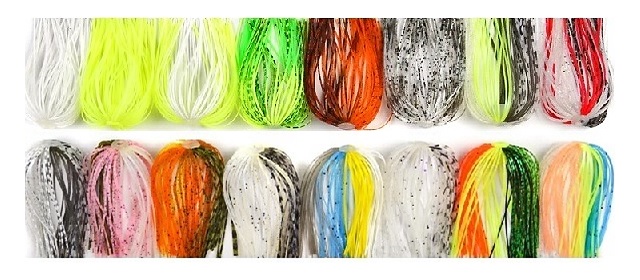
If you reel in a spinner bait once, then take the skirt off for the next retrieve, you will notivce the spinner bait will run in with much greater ease (night and day difference) – so the skirt creates drag in the retreive and slows it down just a bit.
Sometimes the hook comes with a ‘stinger’ or piece of rubber like form that adds even more action (and weight) to the retrieve. Mostly though, these stingers are added by the fisherman post purchase. You can also take the skirt off and just add a rubber worm or lizard.
Try using this for wood structure because you can run it like a spinner, then if there is an area that looks good (or a missed bite) you can stop the retrieve and work it like a jig, and then when you get past that area – work it like a spinner again.
Well there you have it. Hope it helped.




